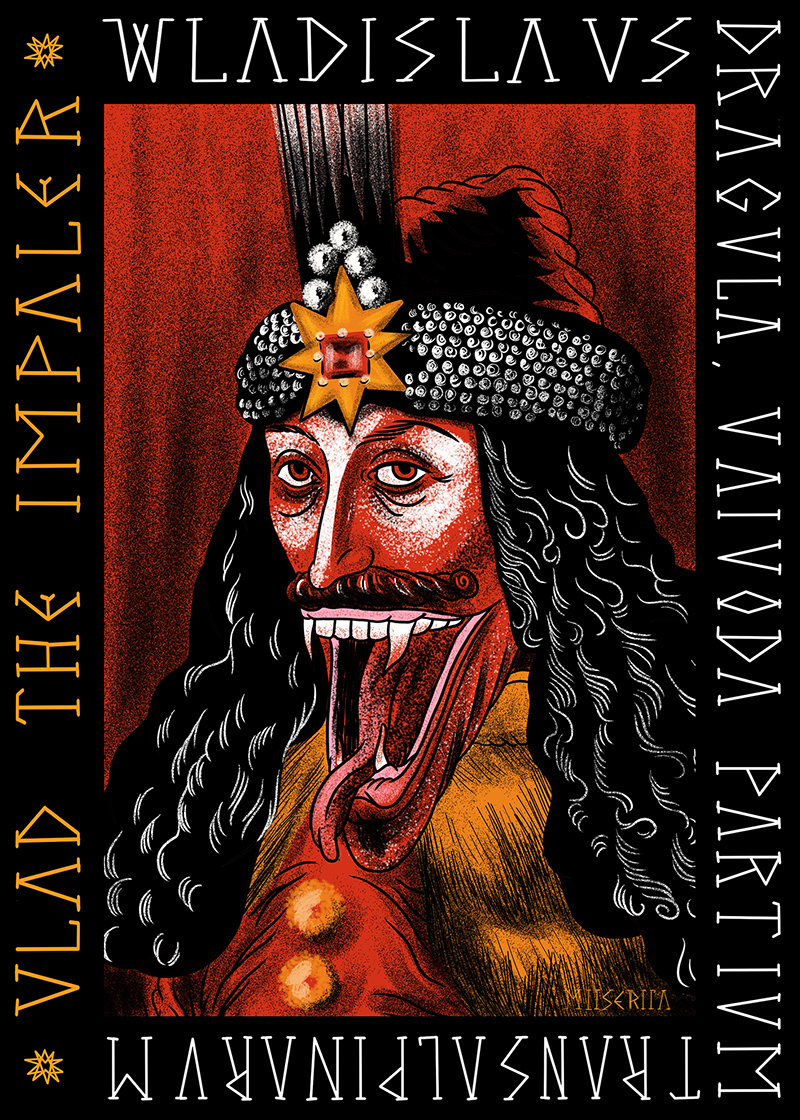Vlad III Dracula, also known as Vlad the Impaler, was one of the most feared rulers in European history. Born in 1431, Vlad grew up in Wallachia (present-day Romania) and spent time as a hostage in the Ottoman Empire during his formative years. These experiences left a lasting impact on him, shaping him into the cruel and ruthless leader he would eventually become.
Vlad came to power in Wallachia in 1456, after his older brother was killed and his father was overthrown. Initially, Vlad was a relatively mild ruler, focusing on restoring law and order in his kingdom and improving the economic situation of his subjects. However, this all changed in 1462, when the Ottoman Empire invaded Wallachia.
The Ottoman army, led by Sultan Mehmed II, was a formidable foe, and Vlad’s troops were vastly outnumbered. In a desperate bid to turn the tide of the battle, Vlad employed a brutal tactic that would come to define his reign: impaling.
As the Ottoman army marched towards the city of Targoviste, Vlad ordered his soldiers to stake thousands of captives on wooden poles arranged in neat rows outside the city walls. These captives, many of them women and children, had been taken during Vlad’s campaigns to suppress rebellions in his kingdom.
For weeks, the impaling continued. Bodies piled up, rotting in the heat of the summer. As the Ottoman army approached, they were met with a grotesque spectacle: thousands of corpses impaled on stakes, their twisted limbs and empty eyes staring up at the sky.
Sultan Mehmed II, horrified by what he saw, immediately turned his army back, deciding that the horror of Targoviste was too much to bear. The tactic was successful, and Vlad’s status as a formidable warrior was cemented.
However, the brutality of the impaling had a lasting impact on European culture, inspiring tales of vampire legends and the legend of Dracula. In fact, Vlad’s nickname, Dracula, translates to “son of the dragon” in Romanian, but it also has other, darker connotations, including “devourer of sons.”
Vlad’s cruelty was not just limited to war. He is also infamous for his mistreatment of the boyars, Wallachian nobles, who he saw as a threat to his rule. These nobles, many of them Catholics, were seen as colluding with the Ottoman Empire, which was predominantly Muslim. In 1460, Vlad ordered the imprisonment, and the slow impaling, of many young boyars tied to wooden poles in his castles.
Later in life, Vlad was captured and imprisoned by Hungary’s King Matthias Corvinus, who saw him as a serious threat to his authority. Vlad died in 1477, after spending years in captivity. His legacy, however, lived on.
Vlad’s tactics and brutal rule were not unique, however. The 15th century was a time of great turmoil and brutality throughout Europe. The Hundred Years’ War, the Massacre of the Princes, and the Black Death all left a scar on the continent, inspiring a growing belief in the concept of “might makes right.”
Vlad was one man who embodied this notion, pushing its extremes to the limit. His legacy, both real and imagined, continues to fascinate people to this day, serving as a vivid reminder of the violence and brutality that has shaped European history.



